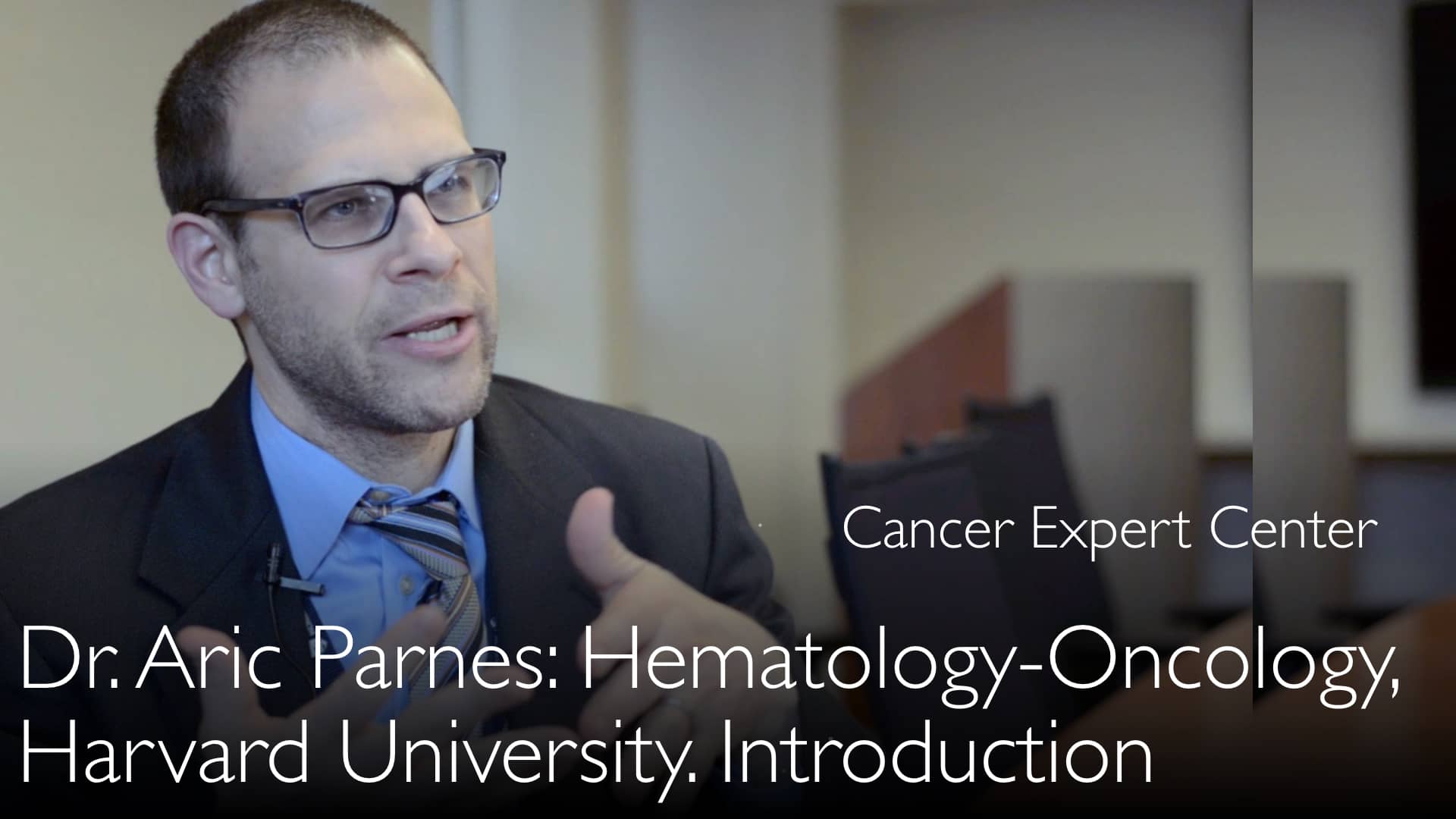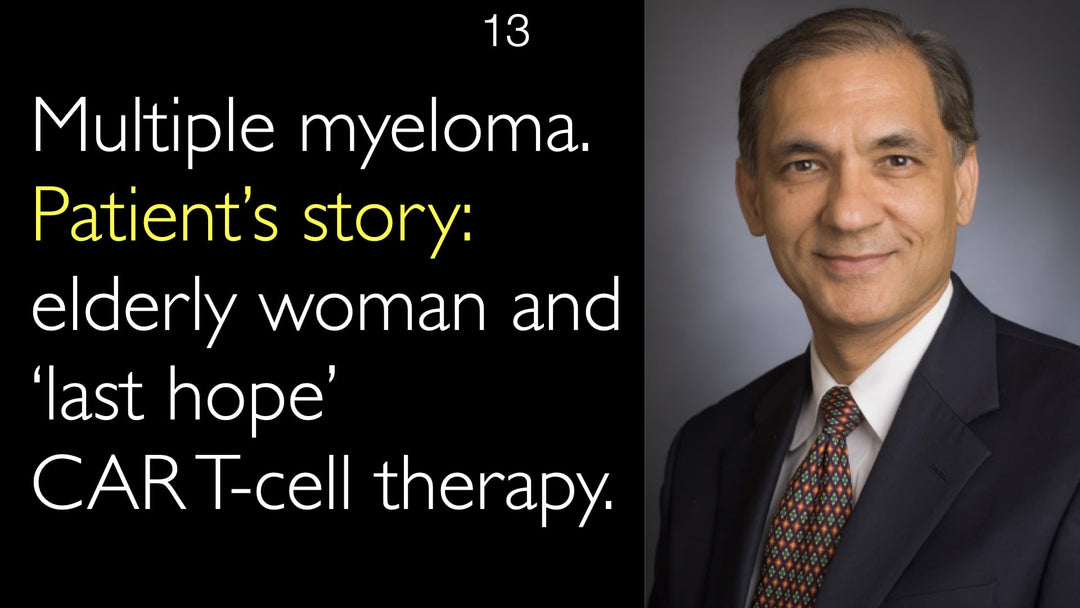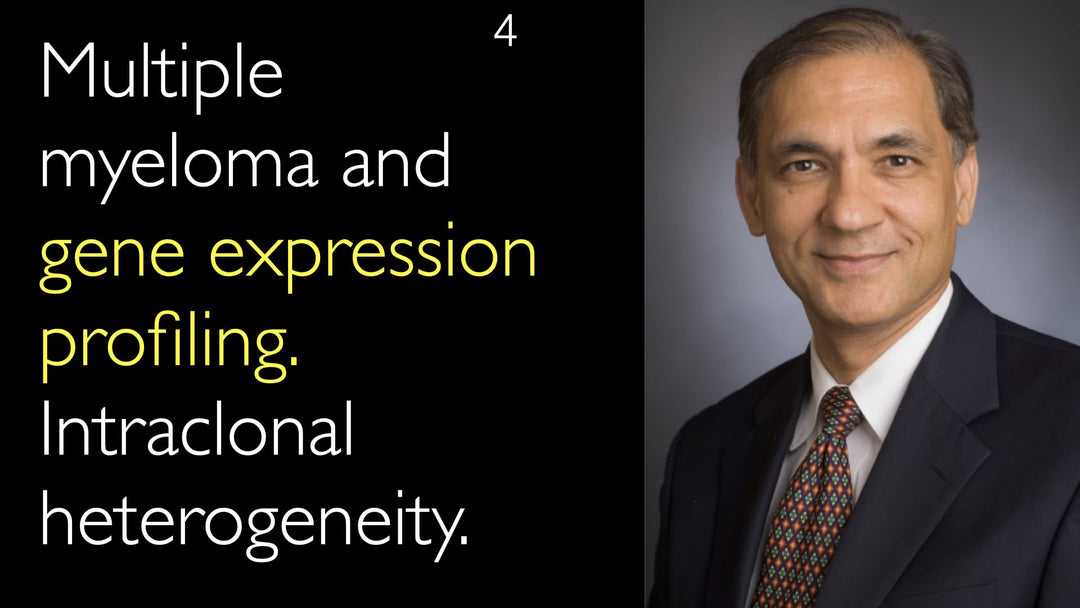Leading expert in hematology, Dr. Aric Parnes, MD, explains modern hemophilia treatment advances. He details how recombinant clotting factor replacement has transformed patient care. Dr. Aric Parnes, MD, discusses the serious complication of inhibitor development. He outlines the use of bypassing agents like FEIBA and NovoSeven for patients with inhibitors. The interview also covers the fascinating history of hemophilia discovery and classification.
Modern Hemophilia Treatment Advances and Managing Inhibitor Complications
Jump To Section
- Modern Hemophilia Treatment
- Hemophilia Complications
- Inhibitors in Hemophilia
- Bypassing Medications
- Hemophilia History
- Full Transcript
Modern Hemophilia Treatment
Modern hemophilia treatment is based on recombinant blood clotting factor replacement. Dr. Aric Parnes, MD, explains that this therapy virtually eliminates the disease when administered regularly. The goal is to maintain clotting factors at a normal level, allowing patients to lead normal lives. Without treatment, patients with severe hemophilia can experience spontaneous bleeding into joints, the abdomen, or even the brain.
Dr. Anton Titov, MD, highlights that treatment has progressed dramatically. Current recombinant factor products are genetically engineered, eliminating the historical risk of blood-borne infections. This represents a major advance in hemophilia care safety and efficacy.
Hemophilia Complications
Dr. Aric Parnes, MD, describes two main types of hemophilia complications. Historical complications involved infection from plasma-derived clotting factors in the 1980s. Approximately 30% of hemophilia patients contracted Hepatitis B, Hepatitis C, or HIV from these treatments.
The primary complication in modern hemophilia care is the development of inhibitors. These are antibodies the immune system produces against the replacement clotting factor. This reaction makes standard treatment much less effective and requires a different therapeutic approach.
Inhibitors in Hemophilia
Inhibitors in hemophilia represent a significant treatment challenge. Dr. Aric Parnes, MD, explains that inhibitors are autoantibodies that attack the clotting factor medication. They develop more often in children with severe hemophilia and in those with hemophilia A (Factor VIII deficiency).
Genetic factors influence inhibitor risk, and they can run in families. Dr. Aric Parnes, MD, notes that immune tolerance induction therapy is an attempt to remove the inhibitor. However, this immunotherapy does not always work, and some patients have inhibitors for life.
Bypassing Medications
Bypassing medications are crucial for treating hemophilia patients with inhibitors. Dr. Aric Parnes, MD, details the two available options: recombinant activated factor VIIa (NovoSeven) and Activated Prothrombin Complex Concentrate (FEIBA). These medications work by circumventing the missing clotting factor and the inhibitor antibody.
Dr. Parnes cautions that these bypassing agents are not as effective as original clotting factors and can themselves cause blood clots. Their use is essential for controlling bleeding episodes in patients where standard replacement therapy fails.
Hemophilia History
The history of hemophilia is rich and medically fascinating. Dr. Aric Parnes, MD, discusses its famous nickname, "The Royal Disease," due to its presence in European royal families. He also explains the critical scientific discovery that led to distinguishing hemophilia A from hemophilia B.
This discovery occurred in the 1950s when scientists mixed plasma from two different hemophilia patients and found they corrected each other's clotting. Hemophilia B was subsequently named "Christmas disease" after the first identified patient, Stephen Christmas, not the holiday. Dr. Anton Titov, MD, finds these medical history stories particularly compelling.
Full Transcript
Dr. Anton Titov, MD: What are advances in treatment of hemophilia? How to help patients with inhibitors and with acquired hemophilia? How to use inhibitor bypassing medications?
Current treatment of hemophilia B patients focuses on recombinant blood clotting factor IX replacement.
Dr. Anton Titov, MD: What history of hemophilia discovery teaches us about hemophilia therapy today? Medical second opinion helps to make sure diagnosis of hemophilia is correct and complete. Get latest update on hemophilia treatment and treatment of acquired hemophilia. Medical second opinion also helps to choose the best treatment for hemophilia A and hemophilia B patients.
Medical second opinion for acquired hemophilia can eliminate need for unnecessary medications.
Who is at risk of developing inhibitors? Patients who were treated many times with blood clotting factor replacement. Hemophilia inhibitors appear more often in children with hemophilia. More severely affected patients often develop inhibitors.
Dr. Aric Parnes, MD: Acquired hemophilia is a disorder of autoantibodies to clotting factor. It is not genetically inherited. Immune tolerance therapy is an attempt to remove inhibitor from the blood of hemophilia patients. Sometimes immune tolerance therapy does not work. Then inhibitor bypassing medications FEIBA and NovoSeven are used. These bypassing medications work in all patients with blood clotting disorders.
Hemophilia treatment has progressed a lot. Acquired hemophilia treatment is rapidly advancing too.
Dr. Anton Titov, MD: Hemophilia is a very famous disease. It runs in several royal families in Europe. Hemophilia is known as The Royal disease. For example, Alexei Nikolaevich, Tsarevich of Russia, had hemophilia. He was son of Russian tsar Nicholas II.
Many patients attribute the strong influence of Grigori Rasputin on the Royal family in Russia to Rasputin's apparent ability to treat hemophilia in the young prince, son of Nicholas II.
Dr. Anton Titov, MD: What is the modern treatment for hemophilia? What are key recent advances in therapy of hemophilia? What can be done to prevent complications of hemophilia?
Dr. Aric Parnes, MD: Hemophilia has perhaps the most interesting history compared to any other disease. It is not only how hemophilia influenced politics and environment. Medical history of hemophilia is most fascinating.
Our understanding of hemophilia has changed dramatically over the last 100 years. In modern medical era we recognize that hemophilia is caused by blood clotting factor deficiency. Blood clotting factors help patients to form blood clots, form scabs and stop bleeding. Hemophilia patients are missing a blood clotting factor.
We can determine the genetic causes of hemophilia. We can identify what gene is mutated or missing. Then we can treat hemophilia patients by replacing that missing blood clotting factor. Such treatment will virtually eliminate the disease.
Hemophilia treatment medication has to be given to patients regularly. The goal of treatment is to maintain the clotting factors at a normal level. Then patients do not need any additional treatment. Patients with hemophilia will then lead normal lives.
Sometimes treatment with clotting factors is stopped. Then hemophilia patients will have bleeding. Bleeding in hemophilia patients happens not only after surgery or trauma. Severe hemophilia patients will bleed spontaneously.
Patients with hemophilia can be lying in bed. Suddenly they can have bleeding in their knee, in the abdomen, or in any other area of the body.
Dr. Anton Titov, MD: Hemophilia patients also can have spontaneous head bleeding, cerebral hemorrhage. Modern treatment of hemophilia is based on blood clotting factor replacement.
Dr. Aric Parnes, MD: Many different clotting factors are available and treatment is very effective.
Dr. Anton Titov, MD: What are common complications of hemophilia? You mentioned that hemophilia patients have spontaneous bleeding. What symptoms or signs that patients with hemophilia have to watch for?
Dr. Aric Parnes, MD: There are two kinds of complications. The first type of complications in hemophilia is more historical. In 1980s many blood clotting factor products came from human blood plasma. They were contaminated with infections.
Hepatitis B, Hepatitis C and HIV viruses were present in hemophilia treatment medications in 1980s. This contamination has decimated many patients with hemophilia. Approximately one third of all hemophilia patients contracted these blood infections. Many hemophilia patients died from these infections.
From 1990s we have developed recombinant blood factor products to treat hemophilia. These new medications do not come from human sources. Therefore, there is no possibility of contracting human-transmitted diseases.
Current treatments for hemophilia are much safer. We do not see that type of complications in hemophilia patients anymore. Current generation of patients is treated only with recombinant clotting factor replacement.
Hemophilia treatment medications produced by genetic engineering technology do not carry risk of blood-borne infections. The main complications in hemophilia patients now are inhibitors.
Inhibitor in hemophilia is an antibody that patient's own immune system makes. Inhibitor attacks blood clotting factor.
Dr. Anton Titov, MD: Inhibitor in hemophilia is a reaction of body to hemophilia therapy. It is a medication-induced autoimmune disease in hemophilia patients.
Dr. Aric Parnes, MD: That's right. Appearance of inhibitor in hemophilia is very similar to other disease. This disease is called acquired hemophilia. Patients who have acquired hemophilia are not born with hemophilia. Their immune system starts to make an antibody. It attacks their own blood clotting factor.
These patients acquire hemophilia. They become hemophilia patients when their own body makes antibodies against their clotting factors. However, usually inhibitors in hemophilia occur in patients who are born with hemophilia. These patients have many treatments with clotting factor products.
Only then inhibitors develop in their blood. There is almost an allergic reaction to blood clotting products. Inhibitor in hemophilia is an autoantibody. It is attacking the medication that patient is given to prevent bleeding.
Inhibitors make the treatment much less effective. Hemophilia patients with inhibitors make too much of this antibody. It does not matter how much clotting factor we give them. Treatment stops working.
In these situations we have to give a bypassing medication to hemophilia patients. Inhibitor-bypassing medication is a treatment that circumvents the missing clotting factor.
Dr. Anton Titov, MD: Bypassing medication also circumvents the auto antibody, the inhibitor. There are only two bypassing medications. One is a recombinant activated factor VIIa. The trade name is NovoSeven.
Another medication is a combination of clotting factors II, VII, IX and X. This inhibitor bypassing medication is Activated Prothrombin Complex Concentrate. Its trade name is FEIBA. FEIBA is abbreviation of "Factor Eight Inhibitor Bypass Agent".
NovoSeven and FEIBA are the only two bypassing medications to treat hemophilia patients with inhibitors. These medications bypass the problem in a clotting cascade. They restore normal blood clotting in hemophilia patients.
FEIBA and NovoSeven would work in any bleeding disorder because they are restarting blood clot formation.
Dr. Aric Parnes, MD: But these inhibitor bypassing medications can themselves cause blood clots. Bypassing medications are not as effective in hemophilia treatment as original blood clotting factors. It is best to avoid the appearance of inhibitor in hemophilia patients.
Dr. Anton Titov, MD: Can hemophilia patients avoid having an inhibitor? Or inhibitor just happens randomly in some patients?
Dr. Aric Parnes, MD: We do not fully understand why inhibitor in hemophilia patients happens. There are genetic mutations that confer a higher risk of developing inhibitor in a patient with hemophilia. This is why inhibitors more often occur in several members of one family.
Hemophilia inhibitors happen mostly in children and not in adults. Sometimes inhibitor appears, we try to get rid of hemophilia inhibitor. This treatment is called "immune tolerance induction".
This is immunotherapy. We hope that after treatment the inhibitor does not return. But often it is impossible to get rid of hemophilia inhibitor. Then it stays in a patient for life.
Such patients can never get clotting factor replacement. They always have to be treated with the bypassing medications FEIBA and NovoSeven. We know that inhibitors happen more often in patients with severe hemophilia than in mild patients.
We know inhibitors happen more in hemophilia A than in hemophilia B. Hemophilia A is a factor VIII deficiency. Hemophilia B is a Factor IX deficiency.
Dr. Anton Titov, MD: Tsarevich Alexei had hemophilia B.
Dr. Aric Parnes, MD: That's right and we didn't know that fact for decades. Because doctors realized that there are two different types of hemophilia only in 1950s. Doctors recognized that there was a missing clotting factor.
Because clinician-scientists could mix blood plasma from hemophilia patient with blood plasma of a person who did not have hemophilia. The blood from the hemophilia patient would become normal. Blood clotting time would become normal because the missing factor was replaced from a normal blood.
There was a very bright scientist who studied hemophilia. She mixed plasma from two different hemophilia patients and found that they both corrected each other. Patients had something in each other's plasma that corrected for the deficit over the other patient.
Dr. Anton Titov, MD: Blood from one patient with hemophilia could treat the problem in the blood of another patient with hemophilia? Two patients with hemophilia could cure each other when their blood was mixed?
Dr. Aric Parnes, MD: That's right. This is how doctors initially discovered that there was a hemophilia A and hemophilia B. The following year, a group in Britain studied several patients who had hemophilia B. Doctors named the hemophilia B in these patients "Christmas disease".
The reason they named the disease "Christmas disease" is because the name of their first patient was "Stephen Christmas".
Dr. Anton Titov, MD: "Christmas disease" is not named after Christmas holiday at the end of a year. It's named after the last name of the first patient with "Christmas disease"!
Dr. Aric Parnes, MD: It was confusing because the scientific article that described "Christmas disease" was published on the week of Christmas.
Dr. Anton Titov, MD: That's a good story as many stories are in medicine. Hemophilia treatment update is reviewed by top hematology expert in video interview. What are advances in treatment of hemophilia patients with inhibitors and with acquired hemophilia? When and how to use inhibitor bypassing medications? What history of hemophilia discovery teaches us about hemophilia therapy today?








